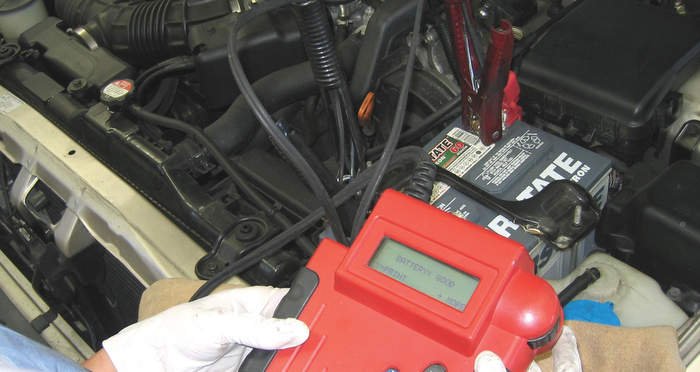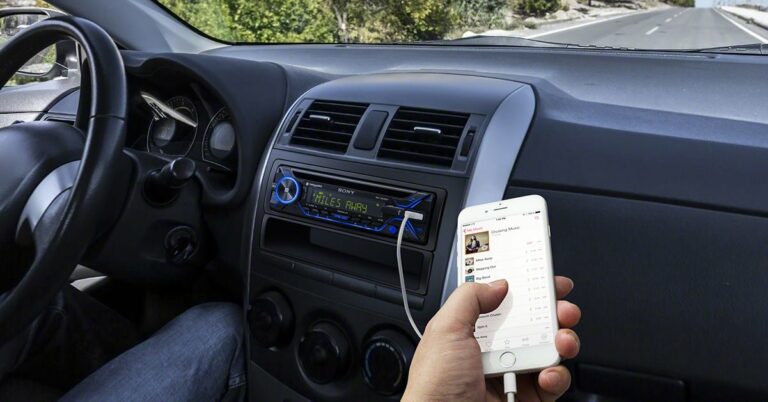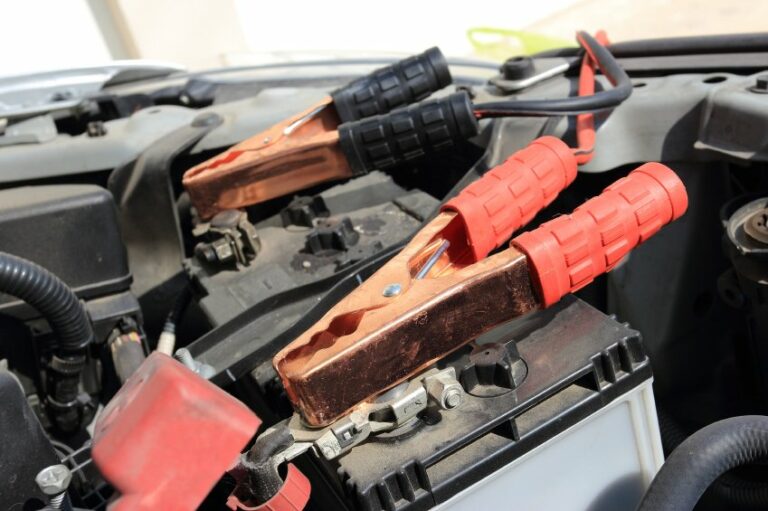How to Check a Car Battery’s Cold Cranking Amps
Today we discuss How to Check a Car Battery’s Cold Cranking Amps. We’ve got you covered! Checking a car battery’s cold cranking amps is a simple process that can provide valuable insight into its performance and overall health. In this article, we will walk you through the step-by-step process of checking these amps, ensuring your car is always ready to start, no matter the weather. So, let’s dive in and learn how to check a car battery’s cold cranking amps!
How to Check a Car Battery’s Cold Cranking Amps
Have you ever experienced the frustrating situation where your car won’t start on a cold winter morning? If so, you may have encountered a problem with your car battery’s cold cranking amps (CCA). The CCA is a crucial measurement that indicates a battery’s ability to provide power in cold weather conditions. In this article, we will guide you through the process of checking your car battery’s cold cranking amps to ensure optimal performance during chilly temperatures.
Understanding Cold Cranking Amps
Before we delve into the process of checking your car battery’s cold cranking amps, let’s first understand what this measurement signifies. Cold cranking amps (CCA) refers to the amount of current a battery can deliver for 30 seconds at 0 degrees Fahrenheit (-17 degrees Celsius) while maintaining a voltage of at least 7.2 volts. It is a measure of the battery’s starting power in frigid temperatures.
Why is Cold Cranking Amps Important?
Cold cranking amps are particularly essential in cold weather conditions because low temperatures can significantly reduce a battery’s starting power. The chemical reactions that occur inside the battery slow down in cold weather, making it harder for the battery to deliver the necessary current to start the engine. Having a battery with an adequate CCA rating ensures that your car will start reliably even in freezing temperatures.
When Should You Check Cold Cranking Amps?
Checking your car battery’s cold cranking amps is a good practice to ensure that it can handle the demands of cold weather. It is especially important if you live in an area with severe winters or if you plan to take a road trip through chilly regions. It’s recommended to check your battery’s CCA annually before the onset of winter to identify any potential issues beforehand and take necessary measures to prevent a dead battery situation.
Signs of a Weak Battery
If you notice any of the following signs, it may indicate that your battery is weak and needs attention:
- Slow engine cranking or difficulty starting the vehicle
- Dashboard warning lights or flickering headlights
- Dim interior lights and other electrical issues
- Old age (typical battery lifespan is around 3-5 years)
Checking Cold Cranking Amps:
Now that you understand the importance of cold cranking amps and when to check them, let’s dive into the process of actually measuring it. Follow these steps to check your car battery’s cold cranking amps:
Step 1: Gather the Necessary Tools
To check your car battery’s cold cranking amps, you will need the following tools:
- A digital multimeter or a battery load tester
- Safety goggles and gloves for protection
- A reliable battery charger (optional)
Step 2: Safety Precautions
Before proceeding with any battery-related tasks, it is important to take necessary safety precautions. Battery acid can be harmful, so you should wear safety goggles and gloves to protect yourself from any potential accidents.
Step 3: Park in a Safe Area
Ensure that your car is parked in a well-ventilated area with enough space to work around the battery. Turn off the engine, remove the keys from the ignition, and engage the parking brake for added safety.
Step 4: Locate the Battery
Open the hood of your car and locate the battery. Most car batteries are situated in either the engine compartment or the trunk. Consult your vehicle’s user manual if you’re unsure about its exact location.
Step 5: Disconnect Battery Cables
Using a wrench or a socket set, loosen the nut on the negative (black) cable first, then remove the cable from the battery terminal. Repeat the same process for the positive (red) cable.
Step 6: Connect the Multimeter or Battery Load Tester
If you’re using a digital multimeter, set it to the DC voltage range and connect the red lead to the positive battery terminal and the black lead to the negative terminal. Alternatively, if you have a battery load tester, follow the manufacturer’s instructions to connect it to the battery.
Step 7: Perform the Load Test
If you’re using a multimeter, crank the engine for about 5 seconds while observing the voltage reading. A healthy battery should maintain a voltage of around 9.6 to 10.0 volts during cranking. If the voltage drops significantly below this range, it may indicate a weak battery.
If you have a battery load tester, simply activate the load test feature and follow the instructions provided by the manufacturer. The tester will simulate a load on the battery and measure its performance under stress.
Step 8: Interpreting the Results
Based on the readings obtained from the multimeter or battery load tester, you can interpret the results as follows:
- If the reading falls within the recommended range for your battery’s CCA rating, your battery is in good condition.
- If the reading is significantly below the recommended range, it indicates a weak battery that may require replacement.
- Repeat the test a few times to ensure accuracy and consistency of the results.
Section 4: Maintaining Battery Health
Now that you have checked your car battery’s cold cranking amps, it’s important to take steps to maintain its health and prolong its lifespan. Here are some tips for keeping your battery in top condition:
Regular Battery Maintenance
- Keep the battery terminals clean and free from corrosion. Regularly inspect and clean them if necessary.
- Ensure that the battery is securely mounted to prevent vibrations that could damage its internal components.
- Check the electrolyte levels (for non-sealed batteries) and top up with distilled water if needed.
Proper Vehicle Usage
- Avoid frequent short trips that don’t allow the battery to fully recharge.
- If you plan to leave your vehicle unused for an extended period, consider using a battery maintainer or disconnecting the negative terminal to prevent parasitic drain.
Cold Weather Considerations
- Ensure that your vehicle’s charging system is in good working condition to provide sufficient power to the battery.
- Park your vehicle in a garage or use a battery blanket/heater during extreme cold weather conditions.
How to Test a Car Battery With a Multimeter ( Voltage + Cold Cranking Amps)
Frequently Asked Questions
How do I check a car battery’s cold cranking amps?
To check a car battery’s cold cranking amps (CCA), you can follow these steps:
What is the purpose of checking a car battery’s cold cranking amps?
Checking a car battery’s cold cranking amps helps determine the battery’s ability to start the engine in cold weather conditions. It is crucial to ensure that the battery has enough power to deliver the necessary current to start the engine when temperatures drop.
Can I check a car battery’s cold cranking amps without any tools?
Unfortunately, checking a car battery’s cold cranking amps usually requires specialized tools like a battery tester or multimeter. These tools provide accurate readings of the battery’s CCA value. It is recommended to use the appropriate tools to get an accurate measurement.
What are the steps to check the cold cranking amps using a battery tester?
The steps to check a car battery’s cold cranking amps with a battery tester are as follows:
1. Connect the positive (+) lead of the battery tester to the battery’s positive terminal.
2. Connect the negative (-) lead of the battery tester to the battery’s negative terminal.
3. Follow the instructions provided with the battery tester to initiate the test and obtain the CCA reading.
Make sure to refer to the specific instructions provided with your battery tester as the steps might vary slightly.
Can I determine the cold cranking amps based on the battery’s voltage?
No, the cold cranking amps cannot be accurately determined based on the battery’s voltage alone. While voltage is an important indicator of a battery’s overall condition, it doesn’t provide a direct measurement of the cold cranking amps. To determine the CCA accurately, using a battery tester is recommended.
What is considered a good cold cranking amps value for a car battery?
The required cold cranking amps value for a car battery depends on the vehicle’s make and model. Generally, it is recommended to have a battery with a CCA rating that meets or exceeds the manufacturer’s specifications. You can refer to your vehicle’s manual or consult a professional to determine the appropriate CCA value for your car battery.
Final Thoughts
In conclusion, checking a car battery’s cold cranking amps is an important step in ensuring its performance and reliability. By following the simple steps mentioned in this article, anyone can easily determine the cold cranking amps of their car battery using a multimeter. Remember, a battery with sufficient cold cranking amps is crucial for starting your vehicle in cold weather conditions. Regularly checking and maintaining your battery’s cold cranking amps will help prevent unexpected breakdowns and ensure a smooth driving experience. So, don’t hesitate to check your car battery’s cold cranking amps periodically to keep it in optimal condition.



